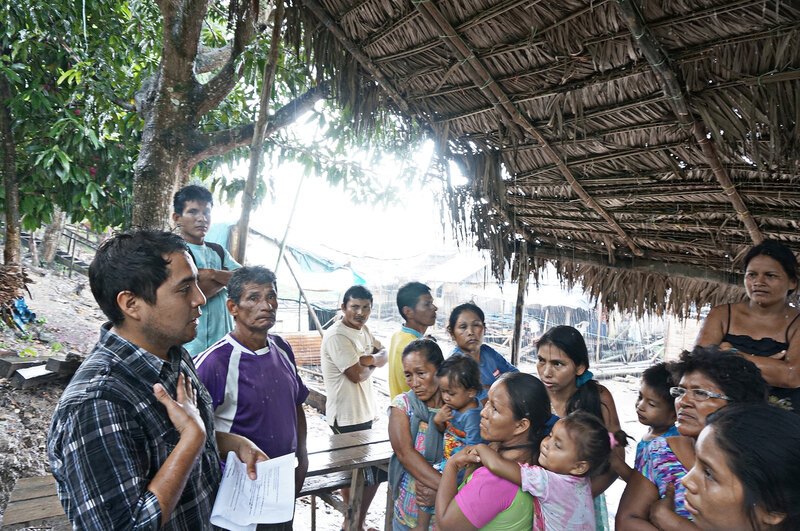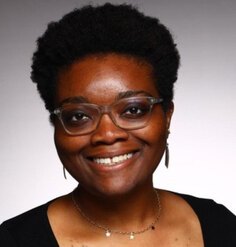Perspectives: Coco Alarcón

April 18, 2018
Jorge “Coco” Alarcón is a Co-Founder of Traction (formerly known as the Informal Urban Communities Initiative), a University of Washington-affiliated design activism, research, and education program working in Peru since 2011. He has over 10 years of experience leading architecture, landscape architecture, and public health projects.
What drew you to landscape architecture?
My background is in architecture, art, and design. When I began practicing in my home city of Lima, Peru, I began to realize I was trained only to provide an exclusive service to the most fortunate, despite more than a third of people in my country living in extreme poverty who may arguably need my services the most. I decided to look for ways to expand the scope of my practice to focus on the marginalized and so turned to social design, activism, and research examining how the built environment can improve health in impoverished communities.
Years of work in the poorest and most desolate environments of my country led me to understand that the most significant interventions for communities, plant and animal life, and the environment were those in the public space and those that transformed desolate spaces into green refuges for community gathering and ecological vigor. These experiences led me to explore public urban design, to continue my education in landscape architecture and global health, and to practice and promote the values of the landscape architecture profession.
What is driving you professionally right now?
My professional practice has two sides: one focuses on design activism, and the other on research. Design activism is an empathetic reaction to the economic, social, and environmental context that surrounds me. I think, as a designer living in a region with so many socio-economic conflicts, one of the ways to contribute to my country and be consistent with my personal values is to become an activist.
In addition, the field of landscape architecture is just now emerging in Peru, and I don’t want it to become an elitist service, as has happened with the other design professions like architecture. I want to demonstrate that you can have an exciting, meaningful career working with any socioeconomic level. I want to create precedents of democratic landscape architecture in my country.
My practice in research is motivated by curiosity and the desire to contribute to my profession and hold it accountable. Landscape architecture is still a very young profession. Although it has roots in art, landscape architecture has other responsibilities, such as satisfying the needs and rights of a community. Addressing needs such as public health and ecological remediation requires scientific and intentional reflection. We must continue creating evidence to be able to say with authority that our designs are improving cities and ecosystems.
What challenges is landscape architecture allowing you to address right now?
Landscape architecture has allowed me to develop strategies to improve public health. The idea that the environment impacts and defines the health of people is not new, however, designing environments with this intention is an emerging challenge, and the documentation and measurement of the impact that landscape interventions have on a community’s health is even newer. By practicing the values of landscape architecture — for example, designing for everyone’s health — and understanding the impact of our designs and processes by measuring the outcomes, I have been able to use design as a strategy to improve public health.
Another challenge is to create new methods for interdisciplinary collaboration. Our field by nature requires interaction with various professionals. One of the methods I use to encourage dialogue is the design charrette. This form of dialogue through organic drawing and writing has become a daily practice for me, not only for the act of designing but also for the exchange of ideas in research projects when working with professionals in the health, environment, ecology, engineering, and other disciplines. Our skillsets in what we are trained to do can then facilitate and lead the integration of other fields.
What challenge would you give emerging leaders?
Landscape architecture is emerging in its strength and visibility as a profession in the world, however, it still has a long way to go. I make it a personal goal to contribute to the expansion and strengthening of the profession and encourage others to join this challenge. You can do this in two ways. First, I challenge landscape architects to once a year take the time to explain to a child, a young person, a professional, and someone working in the government what landscape architecture is and ask how the profession could help them achieve their goals. We need more champions in all these venues. Second, within our practice, I challenge everyone to read at least three scientific papers related to a challenge faced in a design project to connect practice with the larger body of related literature and increase the substance behind design claims. These few small tasks will contribute to spreading the word about what we do, what we can contribute to the world, and how we can increase the impact of our projects by hearings other fields’ perspectives and making informed decisions.
Where do you think the profession needs to go from here?
There are two points that are critical for the development of the profession, and fortunately, there are many individuals, institutions, and organizations working on these. First, the reflection and promotion of our values as a profession to those not in our profession is one of the tasks that all landscape architects — both in academic and professional environments, locally and globally, in communities and authorities — should be doing. Our profession is still emerging and unknown by many, especially in developing countries, and educating others to understand the value our field has to offer is everyone’s job. LAF’s New Landscape Declaration initiative is one of many examples of how we can achieve this.
The second point is to develop evidence in our profession — document our case studies, create new knowledge, and practice these lessons in our day-to-day. While our profession has key artistic values, we design systems that impact the lives of people, ecosystems, and environments. Including science, evidence, and experience in our art is necessary to have a positive impact and transcend as a field.
LAF's Perspectives interview series showcases landscape architects from diverse backgrounds discussing how they came to the profession and where they see it heading. Any opinions expressed in this interview belong solely to the author. Their inclusion in this article does not reflect endorsement by LAF.











